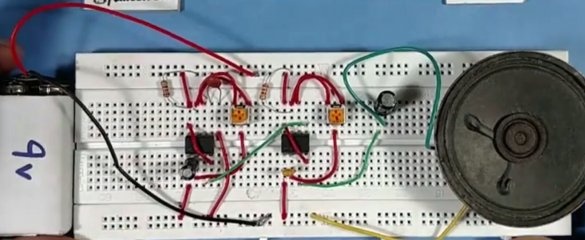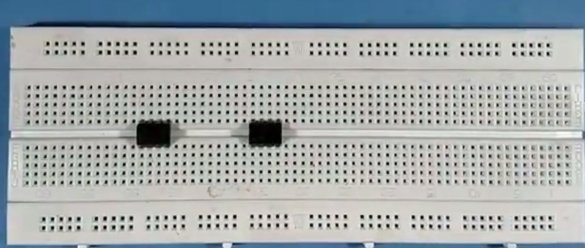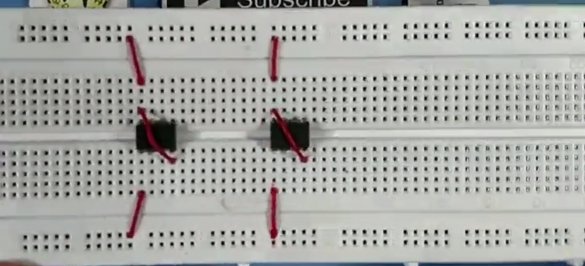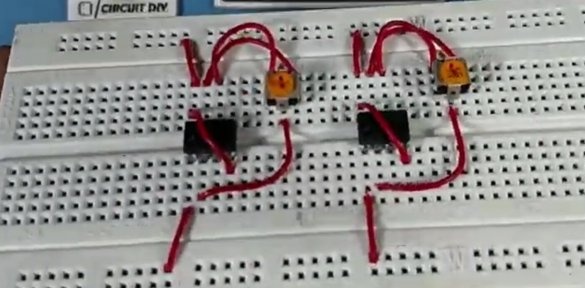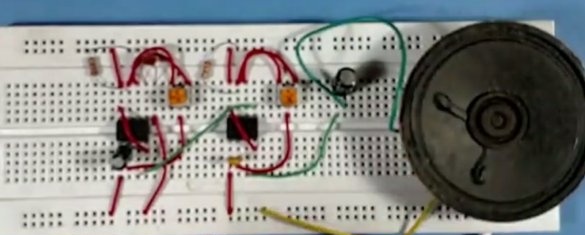Perhaps you once collected a similar homemade, only on transistors. And the author of Instructables under the nickname afzalrehmani performed it on timers of type 555. The principle of operation has not changed at all: a multivibrator working at infra-low frequency jumps up and down another multivibrator working at an audio frequency. By adjusting the switching speed, you can simulate a wired telephone call or an alarm siren. The device diagram is shown below:
By carefully looking at it, you will find that multivibrators differ from each other in frequency-setting capacitors. To generate an infra-low frequency, one cannot do without an electrolytic capacitor of a relatively large capacity (it is connected by a plus to the microcircuit), to obtain the sound frequency, the ceramic frequency is enough, the capacity of which is much less.
CV is control voltage. Since the first of the multivibrators does not require control, the corresponding output is connected to a common wire through a small capacitor. Otherwise, external interference may interfere with its operation.
Trimmer resistors are provided to configure both multivibrators. The first of them controls the switching frequency, the second - the frequencies of both tones of a two-tone siren simultaneously. Contact with a dynamic component on the dynamic head (which can cause overheating of both the head and the microcircuit) eliminates another electrolytic capacitor. Its capacity on the diagram is indicated incorrectly. You need from 1 to 100 microfarads, depending on the desired volume, also a plus for the chip.
The master decided to assemble the siren on a breadboard type breadboard. First of all, he installs both microcircuits on it. There is no soldering and concomitant heating here, so you can start with them.
Then comes the line of jumpers for power supply, as well as connecting the Reset input to the positive bus. The timer 555 corresponds to a logic zero reset, so for the microcircuit to generate, there must be a logical unit at this input.
The wizard continues to install jumpers and components:
When they are all finally installed, connects the dynamic head:
Then it supplies power in the correct polarity:
The siren starts to sound, and now it can be configured with tuning resistors. The beginning of this video shows how each of them affects the sound:

